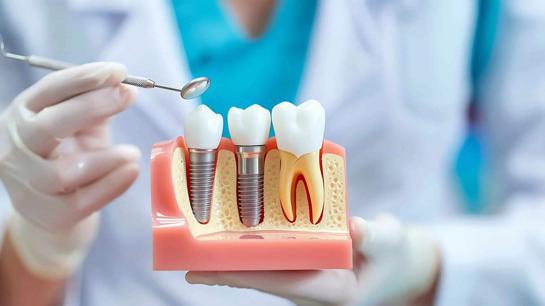Otoplasty Abroad
Curious about otoplasty abroad? This candid guide covers ear reshaping options, costs, surgical techniques, top plastic surgery tourism destinations, clinic safety tips, patient experience, and what to expect from overseas ear surgery and recovery.
When “Just Ears” Become More Than Just Ears
It doesn’t often come up in casual conversation, does it? Yet for anybody who’s ever worried about the shape or position of their ears, it’s always quietly on your mind. If you’ve ever tilted your head just so for photos, or picked your hairstyle for coverage, you know exactly what I mean.
Eventually there comes a moment—could be small, could be big—when you pause and wonder: “Maybe I’m ready to change this.” For more adults than most people think, that question leads straight to otoplasty (ear pinning or reshaping). And, increasingly, another idea right behind it: what if I went abroad?
Let’s break this down—not with clichés, but with what actually matters when real people consider otoplasty abroad.
What Otoplasty Involves (And What It Doesn’t)
Otoplasty is a procedure to reshape, reposition, or resize the outer ear. Sometimes both ears, sometimes just one. Sometimes for prominent ears that stick out, sometimes for injuries or missed symmetry from birth.
It isn’t about “perfection.” And it’s not just for children, either—though plenty do have it when they’re young. Adults often come to the decision after years of “maybe some day.” This is about feeling at ease in your own skin, maybe for the first time.
Surgery varies:
- Traditional ear pinning (moving the ears closer to the head)
- Cartilage reshaping for folds and curves
- Correction of past injuries, or the aftermath of unsuccessful previous surgeries
Scars? Usually hidden in the crease behind the ear. Recovery? Not instant. But in most cases, you’re up and about the same day, with a week or two of bandages and a few months for full settling.
Why Do People Consider Otoplasty Abroad?
Here’s the honest version—not the travel-brochure one.
Cost. That’s often the first motivator. Otoplasty abroad can cost half, sometimes a third, of what you’d pay at home. Especially in the U.S. or U.K., where plastic surgery is rarely covered by insurance.
But it’s more than numbers.
- Privacy. There’s less chance your story becomes town gossip, or that you run into somebody awkward at the pharmacy with a headband on.
- Quick access. At home, you might wait months for a consult. A trip abroad? You can pick your timing.
- Quality and options. Surprised? Many international clinics, especially those focused on plastic surgery abroad, use high-end equipment and advanced techniques—sometimes newer than at home.
- Personalized care. Some people just like feeling like an individual, not a number on a hospital list. The right center abroad, with the right staff, can make a world of difference.
Honestly? Sometimes it’s about more than ears—it’s about reclaiming the decision, doing it on your own terms.
Types of Otoplasty Abroad: Not One-Size-Fits-All
This part might catch you off guard: not all ear surgery is the same. When exploring otoplasty abroad, you’ll see:
- Standard pinning: The classic—moving ears closer, usually with internal sutures.
- Cartilage scoring or sparing: Subtle carving (or bending) of the ear’s cartilage for natural curves.
- Ear reduction: For people who feel their ears are simply too large.
- Reconstruction: For those with injuries, surgery gone wrong, or complex differences from birth.
A good surgeon will recommend the exact technique for your anatomy and goals—not some one-procedure-fits-all routine.
Who’s Actually Doing the Surgery? (And Why You Should Care)
Truth: the right hands matter most.
- Look for board-certified plastic surgeons with strong facial or ear experience—seriously, the skilled touch is everything in otoplasty abroad.
- Ask about training, years of practice, and (yes, absolutely) how many ear surgeries they do annually.
- Is there an anesthesia specialist on site? Are the nursing staff experienced with facial surgery and nerve safety?
- Can you get clear answers, in your language, all the way from first email to post-op instructions?
If anything feels murky, pause. The best clinics offering plastic surgery abroad will answer with specifics, not vague “don’t worries.”
Accreditation and Transparency: What Earns Trust
It’s common for people to feel reassured by credentials—not just fancy logos but proof of standards.
- Is the clinic or surgeon a member of major international or national associations?
- Are there published stats for infection or revision rates?
- What’s their protocol if you have a problem after you return home?
- Do they walk you through the risks, scars, and likely outcomes (not just the Instagram-filter version)?
A reputable clinic puts this up front, not as an afterthought.
The Tools, Setting, and Invisible Extras
Sometimes, it’s the little things that make the experience. Many modern clinics offering otoplasty abroad use:
- High-res imaging to model results
- Minimally invasive surgical tools for smaller incisions
- Full anesthesia or local plus sedation (depends on your needs)
- Comfortable, clean recovery spaces—single rooms, sometimes even hotel-like suites
Oh, but here’s something unexpected: plenty will actually arrange airport pickups, translators, and even “quiet meals” so you don’t have to socialize awkwardly right after surgery. It’s these details that some only appreciate when they’re far from home.
Diagnostics, Pre-Op, and Support You Can Feel
You don’t just show up and hop on a table. The standard for otoplasty abroad usually includes:
- Video consults or pre-trip planning with your surgeon
- Health checks and blood work before the big day
- Walkthroughs of aftercare steps, so you’re not left guessing when you get off the plane at home
A good coordinator will check if you’re bringing a companion or traveling solo. And—this part is key—they’ll plan for follow-up remotely too.
So, What’s Recovery Like—Really?
Here’s the part where people tend to underprepare: you’ll likely wear a headband or dressing that keeps the ears safely in place, day and night, for a week or more. There’s soreness, a little swelling, occasional numbness.
Most people are up, as in walking around and eating, within hours. But you’ll need to avoid bending or bumping your ears for a few weeks. “Final” results? Three to six months, sometimes less, as swelling fades and the cartilage finds its new home.
And those first days? Don’t be shocked if you look “worse” before you look better. It’s totally normal.
Let’s Compare: Otoplasty Abroad vs. At Home
| Home (US/UK/Canada) | Otoplasty Abroad | |
|---|---|---|
| Surgery & fees | $5,000–$9,000 | $1,800–$3,500 |
| Facility/anesthesia | Often extra | Usually included |
| Hotel/recovery suite | Add-on | Sometimes included |
| Flights | N/A | $300–$1,000 |
| Wait time | Months (often) | Days to a few weeks |
It may surprise you—many report all-in packages with full aftercare and coordinated travel, which can offset travel hassle. Always double check what’s included (meds, garments, transfers).
Risks, Results, and What Honest Clinics Will Tell You
Like any surgery, otoplasty abroad comes with risks:
- Infection (rare, but possible)
- Minor bleeding
- Scarring or asymmetry
- Over- or under-correction (which is why skill matters)
- Discomfort—the “my ears feel odd” sensation is nearly universal at first
What matters is that your team has a plan for every “what if,” both while you’re abroad and back home.
Satisfaction? Generally high—over 90% for adults choosing their facility after lots of research, with more confidence and peace about their looks. But even then, expectations matter. Small imperfections happen, and mature, realistic planning wins every time.
Who’s Not a Good Candidate for Otoplasty Abroad?
If you have poorly controlled health conditions, healing/bleeding disorders, or simply cannot bring some support for your return home, it’s smart to wait. Traveling alone or rushing recovery is almost never worth the risk. The best clinics will say so.
And if you’re chasing a “perfect” symmetry that nature rarely provides—or hoping for a result that will fix things far beyond the ears—a local consult with a psychologist or counselor might be just as valuable as a consult with a surgeon. That’s normal. It’s your whole self, not just a procedure.
Choosing a Clinic or Surgeon: Your “Don’t Skip” Questions
Don’t be shy. These are your ears—and your time, money, confidence.
- How many otoplasties do you do each year?
- Can I see proper certification, and real patient case photos?
- Who will I see pre- and post-op, and how do I get answers while recovering abroad?
- Who do I call if I have a question from home?
- What’s included and what’s billed extra?
- What’s your revision or “touch-up” policy?
You’re allowed to ask for details, even if it takes a little time.
Final Thoughts: Listening to Your Own Reasons
There’s no universal right answer. Otoplasty abroad isn’t for everyone. But for people tired of waiting, or wanting a personal, private and often empowering experience, it delivers more than a physical result.
More and more are choosing plastic surgery abroad not for luxury, but for choice, access, and—yes—the relief of finally deciding for themselves.
Take your time, listen to your questions, and know that real, attentive healthcare does exist—even far from home.























